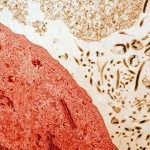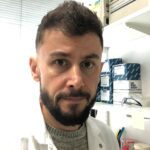Link to Pubmed [PMID] – 28094208
Lancet Infect Dis 2017 05;17(5):545-552
BACKGROUND: The high number of survivors from the 2013-16 west African outbreak of Ebola virus disease (EVD) has raised several new issues: long-term clinical complications, psychosocial consequences, risks of EVD reactivation, and secondary transmission due to viral persistence in body fluids. We aimed to assess long-term clinical, psychosocial, and viral outcomes in EVD survivors in Guinea.
METHODS: In this multidisciplinary observational cohort study, we recruited patients aged 1 year or more in four sites in Guinea (Donka National Hospital, Conakry; Macenta Prefectoral Hospital, Macenta; N’zérékoré Regional Hospital, N’zérékoré; and Forécariah Prefectoral Hospital, Forécariah) following discharge from any Ebola treatment centre in Guinea. Eligible patients had had laboratory-confirmed EVD and had then been declared clear of the virus in the blood. All consenting patients were included, with no exclusion criteria. Trained clinicians assessed patients at enrolment to the cohort, recording clinical symptoms and signs of depression. We did routine blood examinations and examined viral persistence in body fluids using RT-PCR. We did psychological evaluations using questionnaires developed for different age groups. Follow-up is planned to 2 years, and here we present findings at enrolment.
FINDINGS: Between March 23, 2015, and July 11, 2016, we recruited 802 patients, of whom 360 (45%) were male, 442 (55%) were female; 158 (20%) were younger than 18 years. The median age was 28·4 years (range 1·0-79·9, IQR 19·4-39·8). The median delay after discharge was 350 days (IQR 223-491). The most frequent symptoms were general symptoms (324 [40%] patients), musculoskeletal pain (303 [38%]), headache (278 [35%]), depression (124 [17%] of 713 responses), abdominal pain (178 [22%]), and ocular disorders (142 [18%]). More adults than children had at least one clinical symptom (505 [78%] vs 101 [64%], p<0·0003), ocular complications (124 [19%] vs 18 [11%], p=0·0200), or musculoskeletal symptoms (274 [43%] vs 29 [18%], p<0·0001). A positive RT-PCR in semen was found in ten (5%) of 188 men, at a maximum of 548 days after disease onset. 204 (26%) of 793 patients reported stigmatisation. Ocular complications were more frequent at enrolment than at discharge (142 [18%] vs 61 [8%] patients).
INTERPRETATION: Post-EVD symptoms can remain long after recovery and long-term viral persistence in semen is confirmed. The results justify calls for regular check-ups of survivors at least 18 months after recovery.
FUNDING: INSERM/Reacting, the French Ebola Task Force, and Institut de Recherche pour le Développement.

